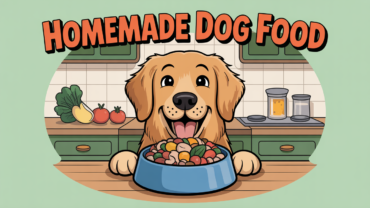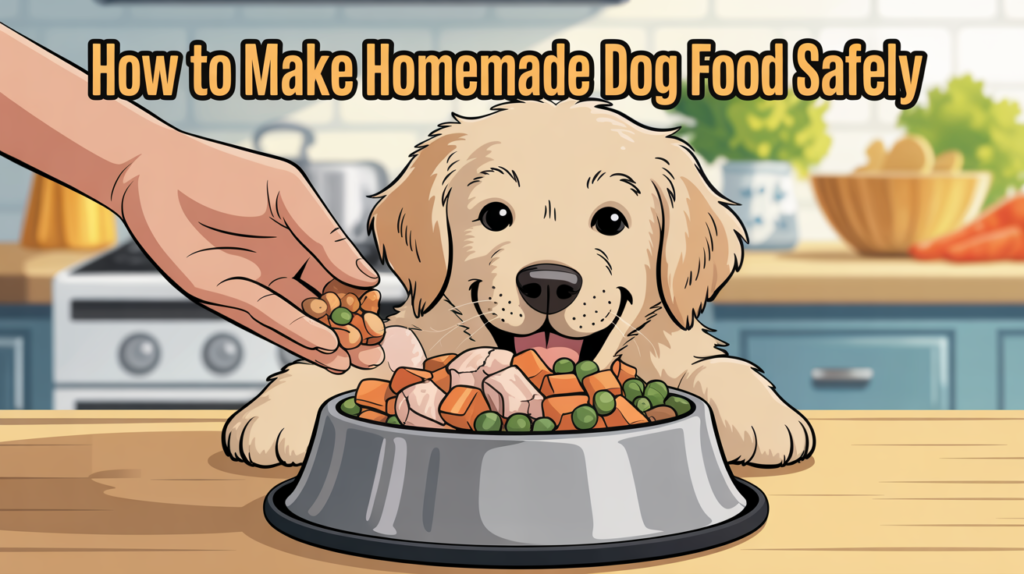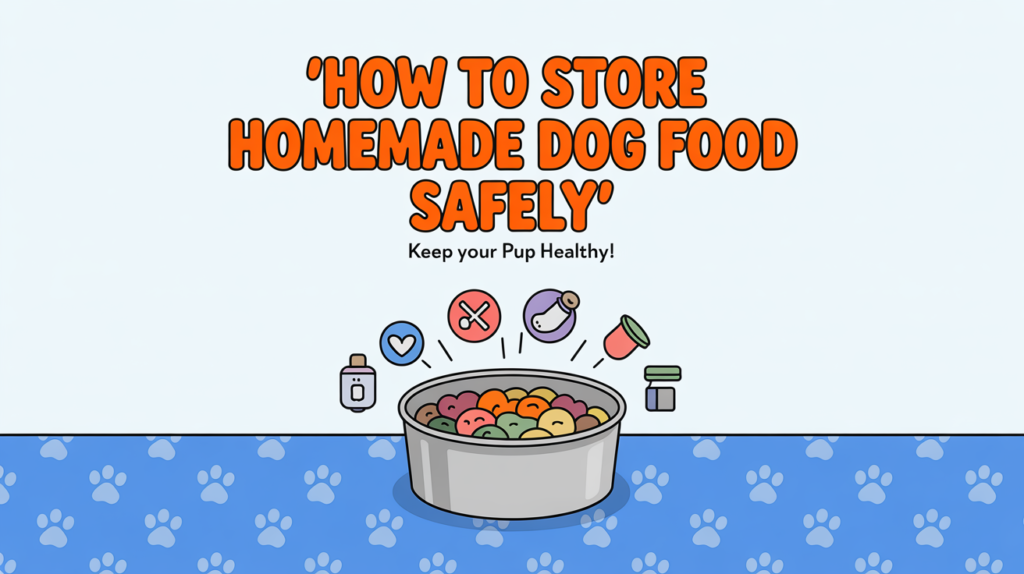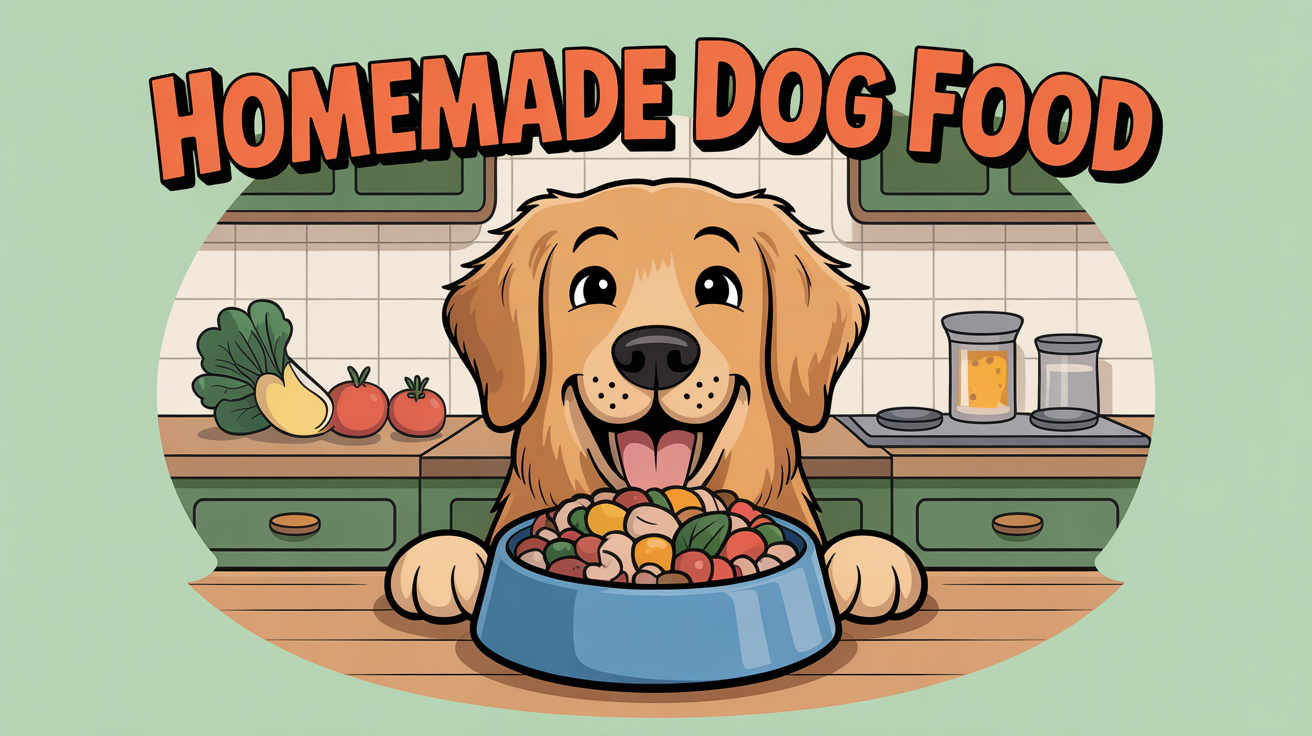We research popular pet products, vet-reviewed sources, and customer feedback to help you make informed decisions.
This post contains affiliate links. As an Amazon Associate, we earn from qualifying purchases. Prices and availability are subject to change.

Introduction: Why Homemade Dog Food is on Every Pet Parent’s Radar
Imagine knowing exactly what goes into your dog’s bowl—no preservatives, no mysterious fillers, just fresh, wholesome ingredients made with love. Homemade dog food is more than a pet trend; it’s a movement among health-conscious dog owners looking for better control, cleaner ingredients, and personalized nutrition for their furry friends.
From dogs with food sensitivities to owners seeking affordable, nutrient-dense alternatives to commercial kibble, the interest in DIY dog food is exploding. Social platforms like Pinterest are brimming with recipes, guides, and community feedback. But before diving in, it’s important to understand what makes homemade meals a smart (and safe) option.
Is Homemade Dog Food Better Than Store-Bought?
Let’s break it down with a quick comparison:
| Pros | Cons |
| Full control over ingredients | Time-consuming to prepare |
| Can help manage allergies | Risk of unbalanced nutrition |
| Cost-effective over time | Requires storage planning |
| No preservatives or fillers | Vet consultation recommended |
Is homemade dog food cheaper? It can be—especially when you buy ingredients in bulk or use seasonal produce. Plus, the peace of mind from knowing what’s in your dog’s bowl? Priceless.
Prefer a professionally formulated alternative? Check out our review of NutriSource Dog Food for a vet-approved option.
How to Make Homemade Dog Food Safely

Creating balanced, homemade dog food isn’t as simple as tossing chicken and rice into a bowl. Dogs need a proper ratio of protein, fats, carbs, and essential nutrients. Here’s what to keep in mind:
- Protein: chicken, turkey, beef, lamb, fish
- Carbohydrates: brown rice, sweet potatoes, quinoa, oats
- Fats: fish oil, flaxseed oil, chicken skin (sparingly)
- Vitamins & Minerals: leafy greens, carrots, pumpkin, peas
Avoid toxic ingredients like onions, garlic, grapes, and chocolate.
Consult your vet to tailor recipes to your dog’s weight, breed, and lifestyle.
What Ingredients Should Be in Homemade Dog Food?
A balanced homemade dog food recipe should contain:
- Protein source (40-50%) — such as ground turkey or chicken breast
- Vegetables (25%) — think sweet potatoes, carrots, green beans
- Whole grains (25%) — brown rice, oats, quinoa
- Supplements (as needed) — calcium, fish oil, multivitamins
Questions like “do dogs need salt in homemade food” often pop up. Generally, dogs get enough sodium naturally from meat. No need to add more unless your vet recommends it.
Homemade Dog Food for Allergies, Kidney Disease & More
Homemade meals are especially beneficial for dogs with health concerns:
For Allergies:
- Use novel proteins (e.g., duck, venison)
- Avoid common allergens like wheat or beef
- Try limited-ingredient recipes
For Kidney Disease:
- Reduce protein and phosphorus
- Include easily digestible carbs
For Weight Management:
- Use lean meats
- Add fiber-rich vegetables
- Control portions strictly
Want inspiration? Check our Pinterest board for allergy-friendly and vet-reviewed recipes.
How Much Homemade Food Should I Feed My Dog?
“How much homemade dog food should I feed my dog?” is one of the most common questions. The short answer: it depends. But here’s a rough guideline:
- Puppies: 5-10% of body weight daily
- Adult dogs: 2-3% of body weight daily
- Senior dogs: 2% or less, depending on activity level
Use a pet food calculator or ask your vet for a personalized plan. Also, consider dividing meals into two daily servings.
How to Store Homemade Dog Food Safely

Homemade meals spoil faster than commercial kibble. Here’s how to keep it fresh:
- Fridge: Store portions in airtight containers for up to 5 days
- Freezer: Portion meals into resealable bags or containers. Label with dates.
- Avoid: Leaving food at room temp for over 2 hours
Can you freeze homemade dog food? Absolutely. Freezing keeps nutrients intact and reduces daily prep time.
Helpful Tools for Making and Storing Homemade Dog Food
The right tools can simplify your DIY dog food journey. Here are our top picks:
- Crock-Pot 7-Quart Slow Cooker — great for batch cooking
- Vtopmart Airtight Food Storage Containers — keep meals fresh longer
- Etekcity Digital Food Scale — perfect for accurate portions
Prices and availability are subject to change. As an Amazon Associate, I earn from qualifying purchases.
Common Mistakes to Avoid When Making Homemade Dog Food
Even with the best intentions, it’s easy to slip up. Here are common errors to steer clear of:
- ❌ Skipping supplements (like calcium or omega-3s)
- ❌ Using toxic ingredients (like onions or garlic)
- ❌ Not rotating protein sources
- ❌ Overfeeding without monitoring weight
For safety and balance, always introduce recipes gradually and monitor your dog’s health.
Conclusion: Should You Switch to Homemade Dog Food?
Homemade dog food can transform your dog’s health, happiness, and longevity. But it requires thoughtful planning, time, and regular vet guidance.
Start small, test a few recipes, and use the tools we recommend to make life easier. If you prefer convenience without compromising nutrition, explore NutriSource Dog Food as a premium backup option.
And don’t forget to follow us on Pinterest for daily recipe ideas, expert tips, and pet care inspiration.
Frequently Asked Questions (FAQ)
1. How much homemade dog food should I feed my dog?
Use 2-3% of their body weight per day, divided into two meals. Puppies and active dogs may need more.
2. Can you freeze homemade dog food?
Yes. Portion it into meal sizes, label, and store for up to 3 months.
3. Is homemade dog food cheaper than commercial dog food?
It can be, especially if you buy in bulk or use seasonal/local ingredients.
4. How do I store homemade dog food?
Refrigerate for 3-5 days or freeze in airtight containers to maintain freshness.
5. What is the best homemade dog food for allergies?
Use limited-ingredient recipes with novel proteins like venison or duck. Avoid grains and common allergens.
6. Can I make dry homemade dog food?
Yes, but it requires baking and longer prep. Try dehydrated recipes or homemade kibble guides.
Ready to Start Making Homemade Dog Food?
Explore our blog for more DIY dog nutrition tips and product reviews, or shop our Amazon picks to get started today!


